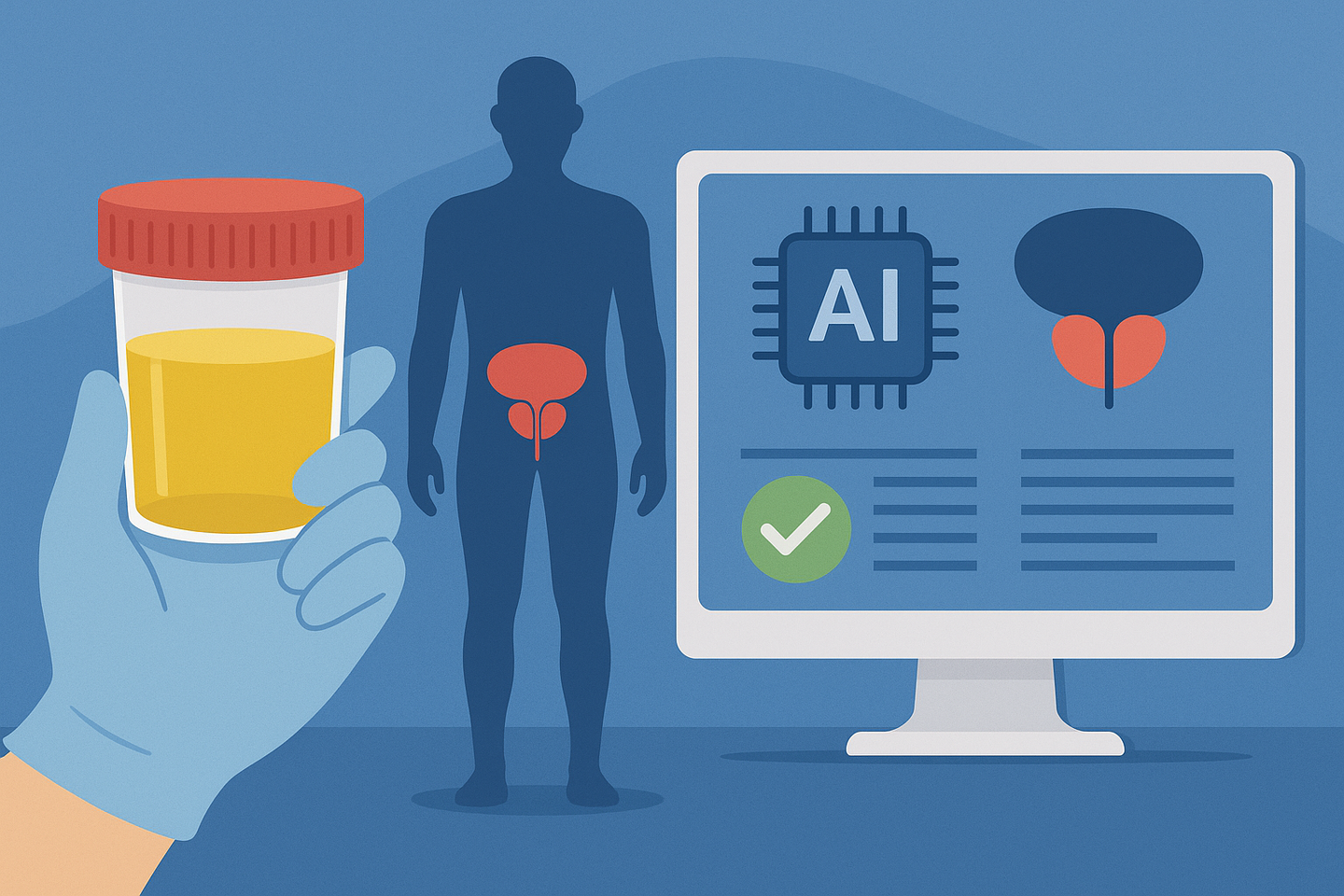New urine test uses AI to diagnosis prostate cancer with 92% accuracy
A new AI-driven urine test may soon offer men a painless, accurate way to detect prostate cancer earlier than current methods allow.

Urine test using AI detects prostate cancer early with 92% accuracy, offering a better option than PSA tests. (CREDIT: AI-Generated / The Brighter Side of News)
Prostate cancer is one of the most common and deadly forms of cancer in men, yet early detection remains a major challenge. That difficulty lies in how subtle the disease can be in its earliest stages—and how hard it is to detect with current tools. Scientists have long known that cancer begins with complex gene activity inside the body. But understanding and tracking those changes in a way that’s useful for early diagnosis has proven difficult—until now.
A recent international study may be a major turning point. Researchers from the Karolinska Institute in Sweden have discovered a way to diagnose prostate cancer early using just a simple urine sample. This approach combines advanced gene analysis, spatial transcriptomics, and artificial intelligence. And it may outperform the widely used PSA test, which often lacks precision.
Mapping the Genes Behind Cancer
Every tumor in the body contains thousands of genes interacting with one another. Those interactions evolve as the cancer becomes more aggressive. But the problem is that they don’t always look the same in different people—or even in different parts of the same tumor. This makes it extremely hard to find a single biological “marker” that always signals the early presence of cancer.
To address this challenge, scientists focused on three key facts. First, tumors can show different levels of change from benign to aggressive. Second, spatial transcriptomics can measure gene activity based on each cell’s position in tissue. Third, the pattern of change over time—called pseudotime—can be modeled using this data. By combining these tools, researchers can track how cells gradually shift from healthy to cancerous.
In the new study, scientists used data from three prostate cancer studies to create pseudotime models. They analyzed how genes behaved in thousands of prostate cells with different cancer grades. This allowed them to find which genes were most closely tied to cancer progression.
Building Digital Models with AI
Researchers created digital models using the full mRNA activity of every human gene in these cells. They mapped the gene activity with each cell’s location and cancer level to form a detailed picture. This showed how prostate cancer grows and changes over time.
Related Stories
- Gene discovery revolutionizes the detection and treatment of prostate cancer
- New one-hour surgery is a gamechanger for men with prostate cancer
Artificial intelligence was used to study the models and find useful biomarkers. These biomarkers are proteins that may signal the presence of prostate cancer in the body. The team found them not only in tumor tissue but also in blood and urine samples. Samples came from nearly 2,000 men, making the data strong and wide-ranging. Many markers showed up clearly in urine, making testing easy and non-invasive.
Machine learning models tested the urine biomarkers for accuracy in spotting cancer. The models reached an AUC score of 0.92, showing very high precision. This score measures how well a test separates healthy from diseased patients. In this case, it outperformed the PSA blood test used in clinics today.
Why Urine Testing Matters
Dr. Mikael Benson led the study at Karolinska Institutet. He says urine testing for biomarkers offers many important benefits. “It’s non-invasive and painless and can potentially be done at home,” says Benson. “The sample can then be analyzed using routine methods in clinical labs.”
This approach could make early testing easier and more accessible worldwide. Instead of needing a biopsy or hospital visit, men could send urine from home. They might get a clear answer sooner and without discomfort. The research also showed that urine markers may reveal how severe the cancer is. Knowing this early could help doctors choose the right treatment without delay.
A Path Toward Clinical Use
Though the results are promising, more testing is still needed. Large clinical trials are being planned to test the method further. One trial may run through TRANSFORM, a national UK prostate cancer study. Professor Rakesh Heer of Imperial College London leads TRANSFORM and co-authored the study.
“New, more precise biomarkers than PSA can lead to earlier diagnosis and better prognoses for men with prostate cancer,” says Benson. “Moreover, it can reduce the number of unnecessary prostate biopsies in healthy men.” Biopsies are invasive and carry risks, so fewer false positives would help patients.
Looking Forward
This new approach could reshape how cancer is diagnosed. It uses spatial transcriptomics, pseudotime models, and artificial intelligence in a powerful way. Not only might it improve prostate cancer testing, but it could help detect other complex cancers too.
The study, published in the journal Cancer Research, succeeded by linking gene changes to cancer grade in thousands of samples. It analyzed samples from more than 2,000 people, which made the findings strong. The clear appearance of biomarkers in urine could make early cancer detection more practical.
This method may someday help detect cancers that are currently hard to find early. For now, the next step is to confirm the findings in more real-world trials. If proven, these urine-based tests could soon reach doctors and patients across the globe.
Note: The article above provided above by The Brighter Side of News.
Like these kind of feel good stories? Get The Brighter Side of News' newsletter.



